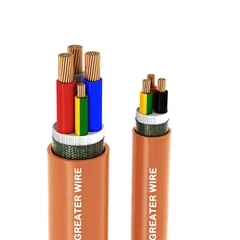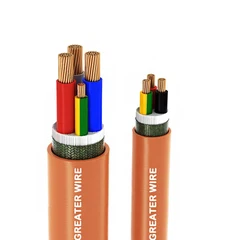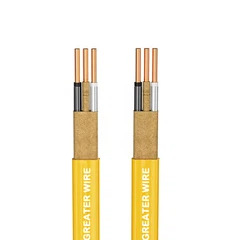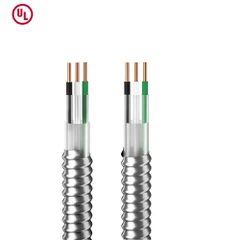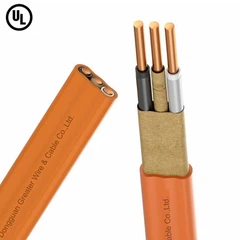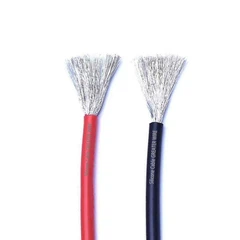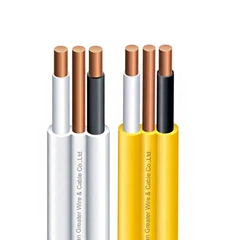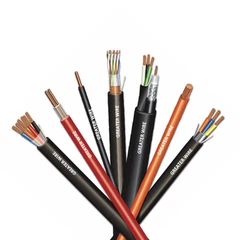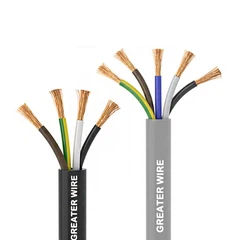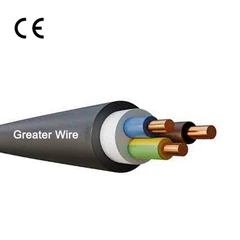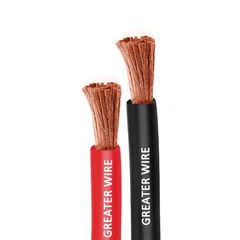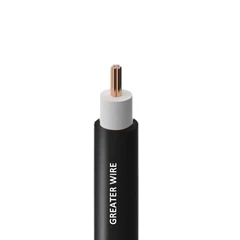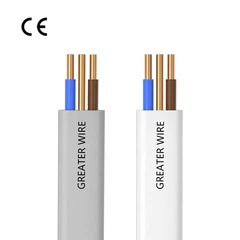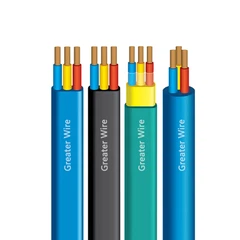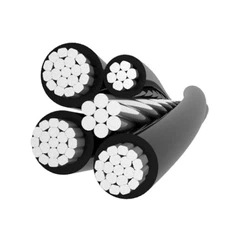In construction and electrical engineering, the selection of cables is crucial. Different types of cables are suitable for different application scenarios and have their own advantages and limitations. This article will analyze four common types of building cables in depth: THHN (thermoplastic high heat-resistant nylon coated cable), THWN (thermoplastic waterproof heat-resistant nylon coated cable), Romex (non-metallic sheathed cable) and XHHW (cross-linked polyethylene high heat-resistant waterproof cable), and make a detailed comparison of their definitions, technical characteristics, applicable environments, temperature tolerance, installation requirements, etc., to provide readers with a clearer cable selection guide.

1. Introduction to THHN Cable
1.1 What is THHN Cable?
THHN (Thermoplastic High Heat-resistant Nylon-coated) is a common single-conductor cable that uses PVC (polyvinyl chloride) as the insulation material and is covered with a heat-resistant nylon coating on the outer layer. It is designed to provide excellent electrical performance and durability, especially for those occasions that require high temperature tolerance.
1.2 Main features of THHN wire
Heat resistance: The temperature tolerance range of THHN wire is usually 90°C (dry environment).
Oil and chemical resistance: Its coating can resist a certain degree of oil and chemical corrosion, and is suitable for use in industrial environments.
Application range: Mainly used for cables in conduits in building electrical installations, suitable for electrical wiring in low-rise buildings such as residential and commercial buildings.
1.3 Use scenarios of THHN cable
THHN cable are widely used in electrical conduits in buildings and are suitable for equipment that requires high temperature and oil resistance, such as household appliances, machine tools and other electrical equipment.
2. Introduction to THWN cable
2.1 What is THWN cable?
THWN (Thermoplastic Heat-resistant Wet and Nylon-coated) cables are similar to THHN cable, but the biggest difference is their additional waterproof function. The structure of THWN cables is similar to THHN cables, both are single conductors, and both are PVC insulated and nylon coated. However, THWN cables are designed for use in wet environments, providing additional moisture resistance.
2.2 Main features of THWN wire
Heat resistance: In dry environments, THWN wire have the same heat resistance as THHN cables, up to 90°C; but in wet environments, their maximum temperature resistance is 75°C.
Waterproofness: THWN wire are particularly suitable for wet environments, such as underground pipes, outdoor cables, etc.
Flexibility and wear resistance: The nylon coating gives the cable good wear resistance and resistance to physical damage.
2.3 THWN cable usage scenarios
THWN cable are often used in wet environments, especially in electrical conduits or electrical lines that need to be exposed to humid air or water. For example, underground cable installation, outdoor lighting circuits, etc.
3. Introduction to Romex Cable
3.1 What is Romex Cable?
Romex is a common cable brand name, usually referring to non-metallic sheathed cable (NM-B cable). Romex cable is generally composed of multiple THHN or THWN wire combined together and encapsulated by a PVC outer sheath. It is particularly suitable for electrical wiring in residential buildings and is a common choice for home electrical installations.
3.2 Main features of Romex cable
Multi-wire design: Romex cable usually contains multiple independent wires inside, which are wrapped together by a separate PVC outer sheath for easy installation.
Fire resistance: The outer sheath of Romex cable has certain fire resistance, but it is generally only suitable for dry environments.
Scope of application: Romex cable is usually used for circuit wiring in residential buildings and is not suitable for high-rise buildings or commercial environments.
3.3 Use scenarios of Romex cable
Romex cable is often used for electrical wiring in homes and small buildings, especially for basic circuits such as electrical sockets and lighting. It should be noted that Romex cable is not suitable for high-rise buildings or commercial electrical applications that require conduit.
4. Introduction to XHHW Cable
4.1 What is XHHW Cable?
XHHW (Cross-Linked High Heat-resistant Water-resistant) cable is a single-conductor cable that uses cross-linked polyethylene (XLPE) as insulation material and has extremely strong heat resistance and chemical resistance. It is designed especially for commercial and industrial buildings and can work stably for a long time in high temperature, humid and even chemical environments.
4.2 Main features of XHHW wire
Cross-linked polyethylene insulation: The biggest feature of XHHW wire is the use of cross-linked polyethylene (XLPE) as insulation material, which makes the cable have higher thermal stability and chemical resistance.
High temperature resistance: XHHW wire can withstand temperatures of 90°C and is suitable for dry and wet environments.
Chemical resistance: XLPE material gives XHHW cable strong chemical resistance and can withstand chemical erosion in a variety of harsh environments.
4.3 Application scenarios of XHHW cable
XHHW cable is suitable for large commercial and industrial electrical projects that require high temperature and chemical resistance. It is commonly used in power transmission in industrial buildings, power supply for industrial equipment and other environments.
5. Comparative analysis of THHN, THWN, Romex and XHHW cables
5.1 Comparison of temperature tolerance
THHN: 90°C (dry environment)
THWN: 90°C (dry environment), 75°C (humid environment)
Romex: suitable for dry environments with lower temperatures, the upper temperature limit is generally 75°C
XHHW: 90°C (dry and wet environments), suitable for high temperature and high humidity environments
5.2 Comparison of waterproofness
THHN: not suitable for humid environments
THWN: waterproof, suitable for humid environments
Romex: not waterproof, suitable for dry environments
XHHW: strong waterproofness, suitable for humid or underwater environments
5.3 Comparison of applicable scenarios
THHN: Applicable to power transmission in building electrical conduits, especially in dry environments
THWN: Applicable to wet environments, suitable for electrical lines that are damp or exposed to water
Romex: Mainly used for residential internal electrical wiring, not suitable for high-rise buildings and commercial purposes
XHHW: Applicable to electrical wiring in industrial, commercial buildings and harsh environments
6. Compliance and regulations
When selecting cables, the installation regulations and usage standards of different cables need to comply with the corresponding building specifications. For example, Romex cables are generally not allowed to be used in buildings with more than three floors, while XHHW cables are suitable for more industrial and commercial application environments.
Choosing the right type of cable depends on multiple factors, including the use environment, temperature requirements, waterproofing requirements, budget, and regional regulations. According to different needs, THHN, THWN, Romex and XHHW cables have their own advantages and disadvantages. Understanding their characteristics and applicable scenarios is the key to ensuring safe, compliant and efficient installation.

